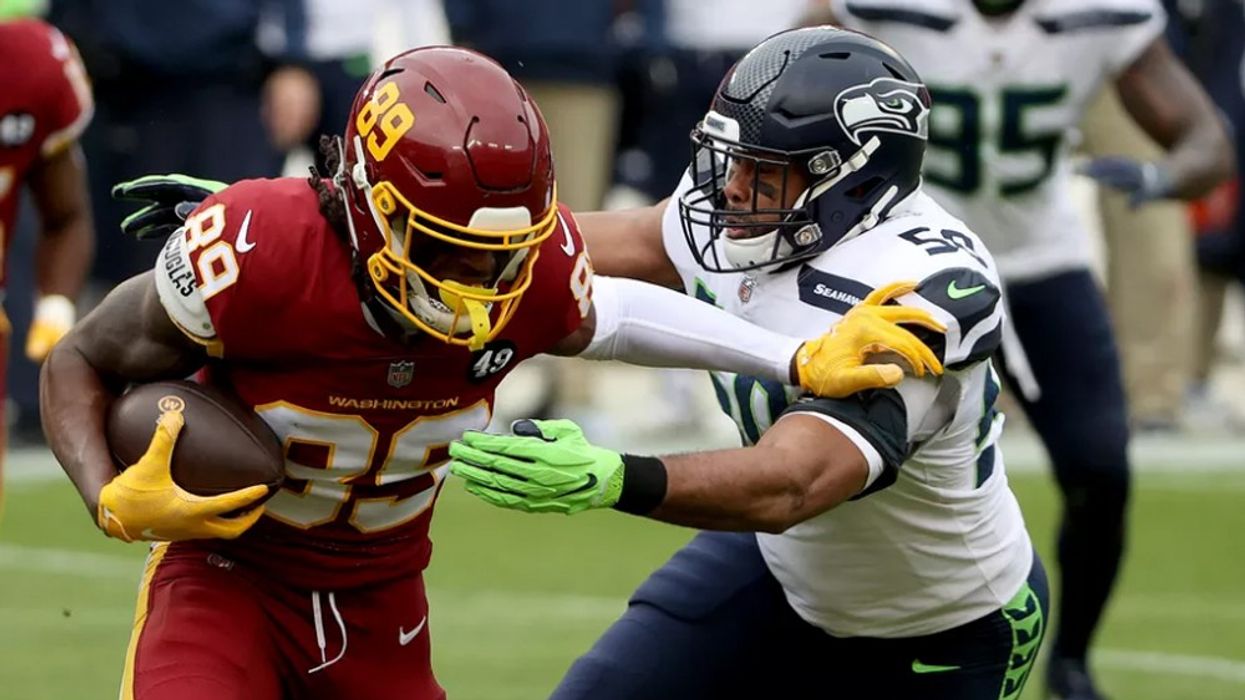Any Given Sunday: How the Sony a7R IV Is Changing NFL Broadcasts
An inexpensive gimbal setup is creating cool cinematic looks.

If you're a football fan, you might have started noticing some silky shallow depth of field shots during Fox NFL games.
As first reported by SVG, the Week 15 tilt between Seattle and Washington had the crew using what they dubbed as "The Megalodon," according to a tweet by reporter Mike Garafolo, where a Sony a7R IV was paired with FE 24-70mm F2.8 GM lens and mounted to a DJI Ronin-S gimbal.
Camera operator Mike Smole called it the “poor man’s Steadicam," and it was used to capture endzone celebrations to mix in with the broadcast.
No Film School spoke with Mike Davies, SVP, technical and field operations at Fox Sports. He told us the feedback has been tremendous.
"You know you're doing something right when the viewers who normally don't notice the things you do technically start to notice them," he says. "We were amazed by people acknowledging the look."
This isn't the first time Fox Sports has created cinematic, pleasing shots. In the past, they've used RED and Sony VENICE cameras, but to kick off this NFL season, they wanted to add a film-like visual aesthetic mixed into the live broadcast.
Crews had already been using the Sony Alpha cameras to capture warm-up and arrivals shots, but Fox used the Sony Alpha as the 11th camera in the Seattle-Washington game.
"We wanted to integrate it into our coverage in a way that worked well," notes Davies. "Our game director Brian Lilley knows what he's doing, and it seemed to really sing with the touchdown celebrations and bench shots—anything with a lot of foreground."
The indie package was outfitted for live television with a field monitor and a wireless transmitter that would send a 1080p signal to the camera truck, where it was color corrected to match the broadcast cameras. In all, the rig costs about $10,000, which is pennies in comparison to a broadcast camera.
"The nice thing about the setup is it's simple and cheap," says Davies. "I can distribute it to a lot of different crews, and it's not going to be unwieldy. It's a fairly democratic piece of technology."
The look has caught on, as CBS Sports has started to integrate a similar idea for its Los Angeles Rams and Chargers broadcasts.
"Imitation is the best form of flattery," says Davies. "It's nice to see CBS giving it a shot though they're doing it a little differently with Sony VENICE cameras."
Fox Sports has always been a champion of new technology. They were the first to broadcast the Super Bowl in 8K. During the 2019 World Series, a meme-rable home run was hit where a guy refused to let go of the beers in his hands and got pelted in the stomach with the ball. Fox was able to capture that moment using the 8K Sony UHC-8300, cropping in on the image.
To broadcast NFL games for fans at home wanting 4K UHD, Fox Sports captures a 1080p HDR (HLG format) signal and then upconverts to 4K.
"We did a straight 4K SDR game, but as we started to refine our view of 4K UHD. In terms of resolution, people weren't exactly interested in resolution. Instead, they were interested in color and HDR," says Davies. Since fewer viewers are watching in 4K UHD at the moment, upconverting to 4K serves the wider HD audience of today.
Fox Sports is taking advantage of 4K (and 8K cameras) every week in other areas too. Cropping in with the higher resolution sensors is a big part of the replays on television.
"We've been doing that for years starting with 2K," says Davies. "We use a 4K Sony HDC-4800 camera for super slow motion all the time. The higher frame rates are able to eliminate the motion blur that you can get when broadcasting 4K."
During one play, the Sony 4800 followed a scrum of players scrambling for the ball. They used it to zoom in 800% to see who recovered it. "It was a little bit blurry, but I don't think we would have gotten that if it wasn't for the 4K camera," he says.

If you happen to watch the Fox NFL Wildcard games this weekend, you'll probably see more of the Sony a7R IV on the field. Fox is also adding robotic cameras on the goal line that are in addition to the traditional pylon cameras to give fans every scoring angle possible. If you notice them Davies says that it's going to be "something special."
Fox Sports using the Sony Alpha cameras is a good sign for many reasons, but probably for No Film School readers, it's a good reminder to keep practicing your "ninja walk." You could be the one operating a Sony Alpha camera during a future game.











